What wall decoration is better to choose?
What do you see when you enter a room at a party, for example. Of course, along with furniture and appliances, it is walls that are most striking. They occupy the largest part of the surface in the room, and fundamentally affect the perception of the entire interior: if the furniture is tastefully selected and everything is put in place, and the wall decoration does not fit into the interior, then it is unlikely to be perceived organically.
Despite the fact that after doing all the previous dirty stages of repair work, the choice of the finishing method seems like a mere trifle, but it is the final layer that you will see constantly, therefore, its selection should be treated with due attention. Consider the most popular, as well as the most interesting methods of wall decoration, determining what type of room they are most suitable for.
Painting
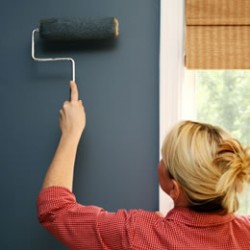 Wall painting - One of the most popular finishing methods. Via paint application You can achieve amazing effects, especially if you combine several colors, create patterns and patterns. So, a certain color can work wonders with a room: if you choose it correctly, you can visually expand the space or make the room warmer, lighter, depending on what needs to be adjusted. Rooms facing the south can be painted in cool shades, while the north can be painted in warm colors. Light and pastel tones somewhat expand the space, dark ones, on the contrary, narrow it, therefore, in each case, a different shade is chosen, taking into account both the design idea and the preferences of the residents.
Wall painting - One of the most popular finishing methods. Via paint application You can achieve amazing effects, especially if you combine several colors, create patterns and patterns. So, a certain color can work wonders with a room: if you choose it correctly, you can visually expand the space or make the room warmer, lighter, depending on what needs to be adjusted. Rooms facing the south can be painted in cool shades, while the north can be painted in warm colors. Light and pastel tones somewhat expand the space, dark ones, on the contrary, narrow it, therefore, in each case, a different shade is chosen, taking into account both the design idea and the preferences of the residents.
As for the types of paints, today water-based, adhesive, enamel, and oil paints are most often used to cover walls. All of them have some kind of features.
 So, enamel and oil paints can be combined into an alkyd group. Their advantages are tremendous resistance to water, ultraviolet, they can be applied in any way: even with a roller, even with a spray, even with a brush, they quickly dry, form a durable surface. But, nevertheless, they are not resistant to alkalis and are fire hazard, and staining should be carried out in the conditions of ventilation, as even after that the smell remains. Suitable for wooden, metal, plastered surfaces.
So, enamel and oil paints can be combined into an alkyd group. Their advantages are tremendous resistance to water, ultraviolet, they can be applied in any way: even with a roller, even with a spray, even with a brush, they quickly dry, form a durable surface. But, nevertheless, they are not resistant to alkalis and are fire hazard, and staining should be carried out in the conditions of ventilation, as even after that the smell remains. Suitable for wooden, metal, plastered surfaces.
Water based paints significantly better in terms of virtually no odor. Here the coloring pigments are dissolved in water, and after application, the water evaporates, and a smooth smooth surface forms on the walls. This paint dries quickly, it allows you to choose absolutely any shade, since the color can be formed by adding the appropriate pigment. In addition, it is easy to apply, and all instruments then easily wash off the paint. There are practically no drawbacks, but it is not suitable for laminated and glossy surfaces. It is worth noting that among these paints there are also some subspecies, but the general characteristics are the same. When buying water-based paints, you should beware of fakes: they manifest themselves much worse during application and operation.
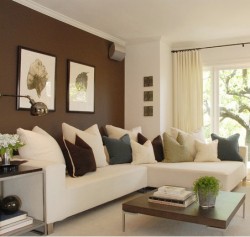 There are also adhesive paints, which include starch, polyvinyl alcohol, cellulose ethers, casein solution and some other substances. This type of coating is very similar to a water-based paint, but it is afraid of water, but it allows air to pass through, i.e. breathing.
There are also adhesive paints, which include starch, polyvinyl alcohol, cellulose ethers, casein solution and some other substances. This type of coating is very similar to a water-based paint, but it is afraid of water, but it allows air to pass through, i.e. breathing.
There are also silicate paintswhich have breathability, resistance to temperature changes, to the ingress of water, etc. They behave well in operation, but you must be careful when applying, since alkali is part of the composition. This limits the colors and scope: it can not be used for stone, glass and metal, but for plastering it is a great option.
Where to use? Walls can be painted in any room, and if in living room, the bedroom, nursery, etc. completely for the entire surface you can use paint, only by combining its color, then for kitchens and bathrooms it is better to combine paint, for example, with ceramic tiles.
Wallpaper
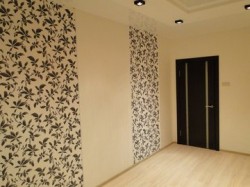 Well, what other wall material is more common than wallpaper? Because wallpapers come in different types, their use is almost unlimited, however, they are an option more for rooms where there are no negative factors, such as humidity and dirt. But since there are different types of waterproof wallpapers, for example, cullet, vinyl wallpapers, liquid wallpaper, then the scope of their use is expanding.
Well, what other wall material is more common than wallpaper? Because wallpapers come in different types, their use is almost unlimited, however, they are an option more for rooms where there are no negative factors, such as humidity and dirt. But since there are different types of waterproof wallpapers, for example, cullet, vinyl wallpapers, liquid wallpaper, then the scope of their use is expanding.
With the help of wallpaper you can create an amazing interior: if we are already used to paper, then photo wallpaper add zest to the room, cullet, non-woven and linkcrust can be painted fabric wallpaper make the room very cozy and unusual.
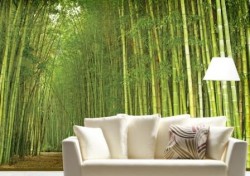 FROM wallpapering the walls to cope easily and independently, although some types (photo wallpaper, linkcrust) will require some skill.
FROM wallpapering the walls to cope easily and independently, although some types (photo wallpaper, linkcrust) will require some skill.
Where to use? Each type of wallpaper has its own characteristics: paper, for example, is preferable to use in the living room and bedrooms, but vinyl for the bedroom is no longer suitable, since it does not breathe. But at the same time, paper wallpaper Is bad option for the kitchen, a cullet they can handle it, although it’s better to equip the working area in the kitchen with something even more powerful.
Decorative plaster
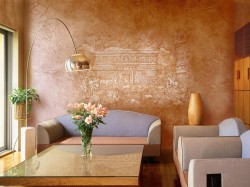 This is a modern type of wall decoration, which allows you to create an original coating in a fairly simple way, but at the same time it will be stable and durable. Depending on the filler, the plaster may look slightly different and have different performance properties. Here is just a short list of possible options for decorative plaster:
This is a modern type of wall decoration, which allows you to create an original coating in a fairly simple way, but at the same time it will be stable and durable. Depending on the filler, the plaster may look slightly different and have different performance properties. Here is just a short list of possible options for decorative plaster:
- textured - here are based on synthetic materials and various fillers of both natural and artificial origin. Depending on what type of filler is used here, a certain relief is obtained on the wall after drying;
- terrazitic. The composition includes mica, as a result of which its appearance is easily recognizable, but most often it is used in public places;
- latex - practically not afraid of mechanical damage;
- silicate - do not swell and are slightly susceptible to contamination;
 Venetian plaster, due to a special application technique, has a surface like polished marble;
Venetian plaster, due to a special application technique, has a surface like polished marble;- tadelact - plaster, which is not exposed to moisture and water, and at the same time does not contain any synthetic additives.
Regardless of the characteristics of different types of plasters, they all have a lot of advantages: their layer hides minor wall defects, and especially difficult surface preparation for its application will not be needed. The finished coating is not afraid of moisture, it can be wiped with a damp cloth, and it can be applied to almost any surface - from wood to concrete.
Where to use? Decorative plaster due to its decorative and operational properties, it can find its application both in the hall and bedroom, and in the hallway, and even the kitchen, not to mention public places.
Ceramic tile
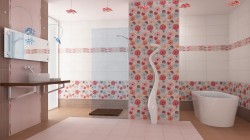 It’s hard to come up with the same durable, aesthetic, diverse material as ceramic tile. It is distinguished by a huge selection of sizes and patterns - so there should be no questions when decorating walls, it is fireproof, environmentally friendly, not affected by moisture, water, chemicals, etc., easy to clean, so it is used where possible influence.
It’s hard to come up with the same durable, aesthetic, diverse material as ceramic tile. It is distinguished by a huge selection of sizes and patterns - so there should be no questions when decorating walls, it is fireproof, environmentally friendly, not affected by moisture, water, chemicals, etc., easy to clean, so it is used where possible influence.
When choosing a tile, you should pay attention not only to its appearance and size, but also to the technical characteristics. So, according to water resistance, it is divided into 8 groups:
- the first is characterized by the fact that it absorbs only 3% of moisture
- the second - 6%,
- the third is 10%.
For apartments, if tiles are used in the bathroom and the kitchen, it is better to choose the first or second class, for the hallway, a much less water resistant option is also suitable.
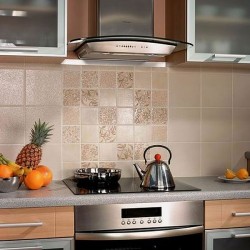 There is also a classification depending on how much the tile is affected by chemicals:
There is also a classification depending on how much the tile is affected by chemicals:
- class AA says that the material is not affected by chemicals at all,
- class A - that the surface of the tile changes its appearance a little with such an effect.
No aggressive agents are used in kitchens and bathrooms, so this indicator can not be taken into account especially, but it is better not to take the tiles of the lowest class C, since there is no guarantee that your detergent will not prove lethal for this variant of a dose of any chemical .
Where to use? Naturally, in kitchens and bathrooms, it is also possible in hallways and in those places where a great impact is made on the walls. Tiles can be combined with other types of finishes, as the walls are clean tiled, sometimes they look a little repulsive, and in the bathroom you can combine tiles of different sizes, colors and textures.
Natural and artificial stone
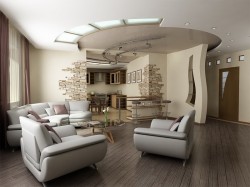 A natural stone - It is expensive, luxurious and very durable. Probably, it’s not worth telling that natural stones are not much prone to any influence. Marble, granite can last in its original form for about a hundred years, while the coating will be unique, since nature will not be able to repeat exactly the same stone.
A natural stone - It is expensive, luxurious and very durable. Probably, it’s not worth telling that natural stones are not much prone to any influence. Marble, granite can last in its original form for about a hundred years, while the coating will be unique, since nature will not be able to repeat exactly the same stone.
Fake diamond devoid of many inherent disadvantages of the natural. So, it is much easier, therefore, it will not be necessary to fix the foundation to decorate the walls a little, it is easier to install, and much cheaper. Its diversity is great: different colors, different textures, imitation under brick, marble, granite, sandstone, etc., and some options look very good and even natural, as responsible manufacturers use a lot of different blanks so that the same form of stone is not repeated often - and this is the key to the stone was perceived as naturally as possible.
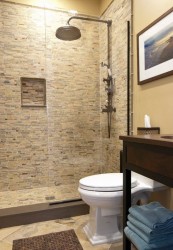 The stone is great for decorating internal walls, but only in combination with other materials, otherwise you can get the effect of a gloomy medieval castle, and if this is not in your plans, it is better to decorate only certain elements with a stone. So, often door or window openings, arches, space about tables in the kitchen, the head of the bed, the wall near the fireplace, etc. - there are many options, and with skillful combination you can get very stylish rooms.
The stone is great for decorating internal walls, but only in combination with other materials, otherwise you can get the effect of a gloomy medieval castle, and if this is not in your plans, it is better to decorate only certain elements with a stone. So, often door or window openings, arches, space about tables in the kitchen, the head of the bed, the wall near the fireplace, etc. - there are many options, and with skillful combination you can get very stylish rooms.
Where to use? Since stone for interior walls is not used as a continuous coating, its elements can be present in absolutely all rooms - it all depends on developed interior design.
Wall panels
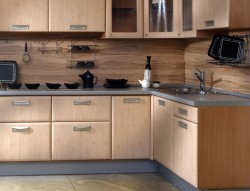 Wall panels - this is material with which you can transform a room beyond recognition simply instantly by the standards of finishing work, and do it without dirty processes. Wall panels have a wide variety of textures, and can even imitate wood or stone, are perfectly combined with other types of finishes. They are durable, easy to care for, can be mounted on any surface, even on uneven. Depending on how the panels are located on the wall and are attached to each other, they are divided into tile, sheet and rack.
Wall panels - this is material with which you can transform a room beyond recognition simply instantly by the standards of finishing work, and do it without dirty processes. Wall panels have a wide variety of textures, and can even imitate wood or stone, are perfectly combined with other types of finishes. They are durable, easy to care for, can be mounted on any surface, even on uneven. Depending on how the panels are located on the wall and are attached to each other, they are divided into tile, sheet and rack.
Different materials can be used for production, therefore panels can be plastic, wooden, based on particleboard or fiberboard, plasterboard, cork, etc. The properties of these materials are slightly different: plastic plates, for example, have excellent moisture resistance, are easy to operate.
Where to use? Fit for the living room, hallway, kitchen, bedroom, and can be combined with others with other elements of decoration.
Cork
Cork coating is made from crushed pressed cork crumbs. The result is slabs or rolls, the difference between which is perhaps in price - the plates are more expensive. The coating has, as a rule, a meager selection of colors - these are shades of brown. It adds heat and noise insulation to the room, characterized by resistance to various microorganisms.
Where to use? Often used for lining the walls of balconies, as well as bedrooms, halls, and sometimes hallways.
Other coatings
In addition to all of the above coatings, others can be used, for example, a mosaic, which is composed not only of ceramic tiles, but also of metal. It looks interesting leather tiles, glass and mirrors, etc.
Finally
In addition, the specific wall covering in its functional characteristics is suitable only for a certain type of room, but also in appearance it should be selected so that it fits into the interior. For instance, fabric wallpaper or wallpaper linkrust it’s very difficult to fit into a hi-tech interior, and there are many such examples, so choosing a finish requires a responsible approach.

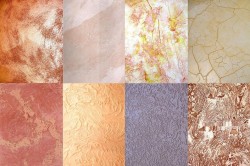
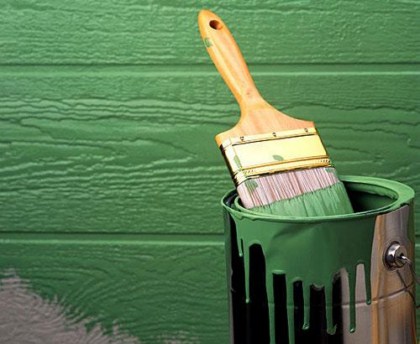


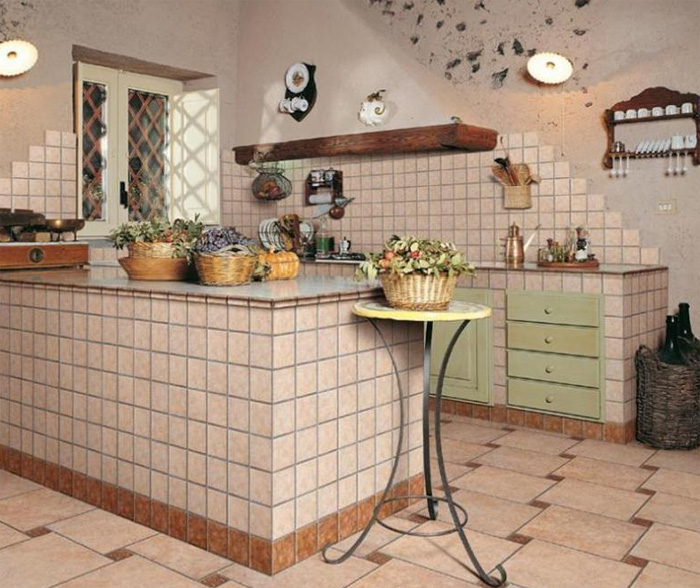
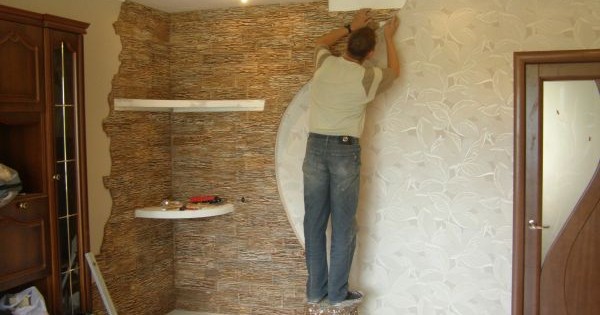
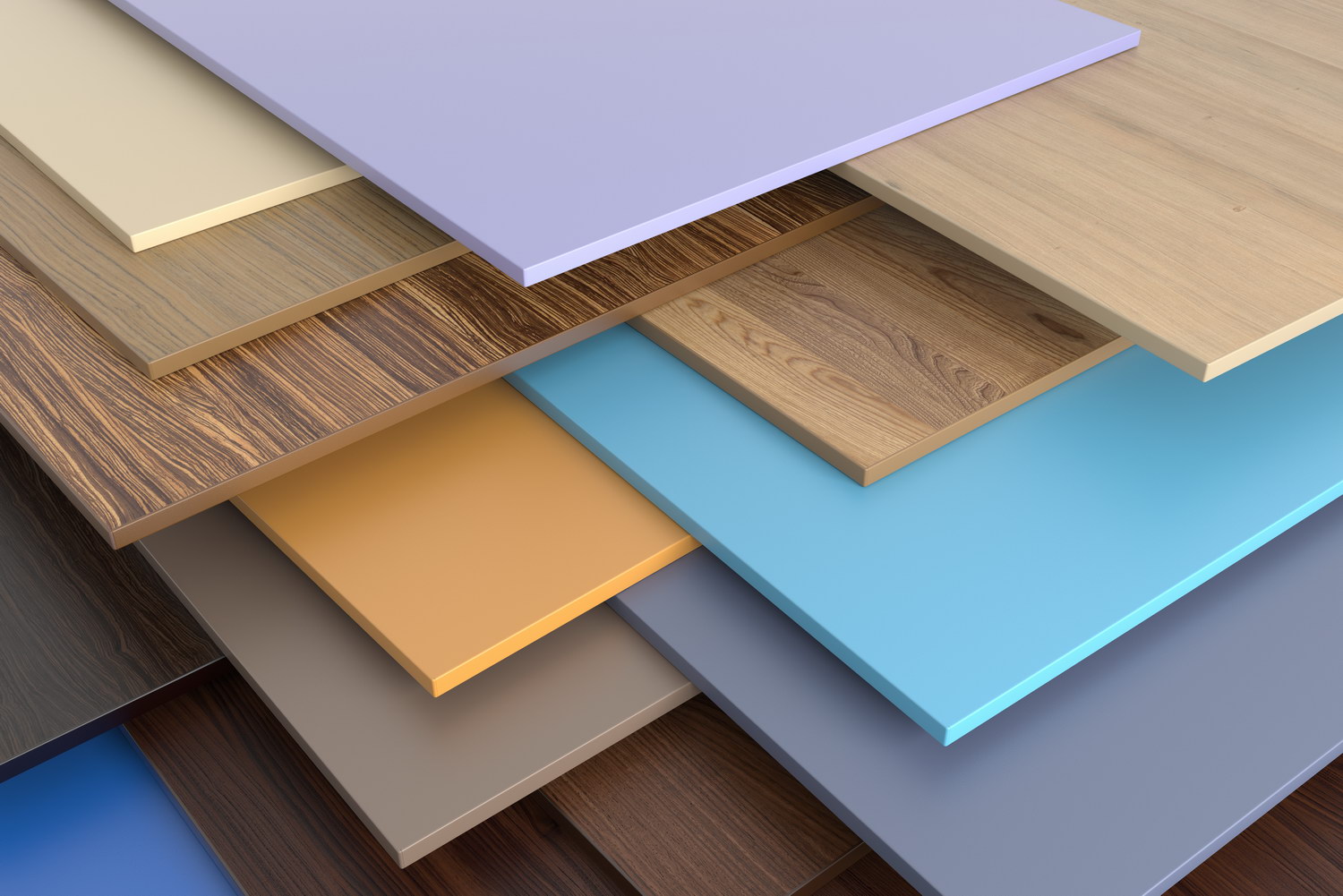

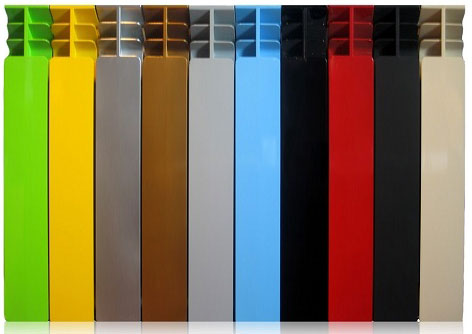

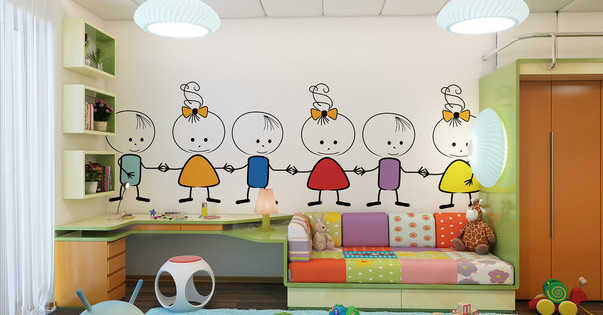
Interesting topic 5+
The choice of materials is now large, the main thing is that the coating is environmentally friendly.